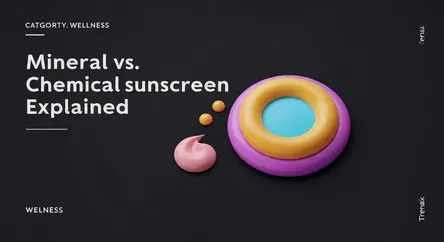Wellness
Mineral vs. Chemical Sunscreen Explained

Understand the key differences between mineral and chemical sunscreens, why one is trending, and how to choose the best option for your skin and the planet.
What is it?
Sunscreens fall into two main categories: mineral and chemical. Mineral sunscreens use active ingredients like zinc oxide and titanium dioxide to create a physical barrier on the skin that reflects harmful UV rays. Think of it as a shield. Chemical sunscreens use organic compounds such as oxybenzone, avobenzone, and octinoxate. These ingredients work by absorbing UV radiation, converting it into heat through a chemical reaction, and then releasing it from the skin. Many modern sunscreens are also hybrids, combining both mineral and chemical filters.
Why is it trending?
Mineral sunscreens are gaining popularity due to growing consumer awareness. There are concerns about chemical ingredients like oxybenzone being absorbed into the bloodstream, whereas the FDA recognizes mineral actives as generally safe and effective. This makes mineral options a preferred choice for those with sensitive skin. Furthermore, environmental consciousness plays a significant role. Key chemical ingredients like oxybenzone and octinoxate have been linked to damaging coral reefs, leading to bans in certain regions and a rising demand for "reef-safe" mineral alternatives.
How does it affect people?
The choice impacts skin health and daily use. Mineral sunscreens provide immediate protection and are less likely to irritate, making them ideal for sensitive, acne-prone, or rosacea-prone skin. However, they can be thicker and may leave a white cast, especially on deeper skin tones. Chemical sunscreens are often lighter and absorb without residue, making for an easier application. On the downside, they require 15-20 minutes to become effective and can sometimes cause skin irritation or allergic reactions.